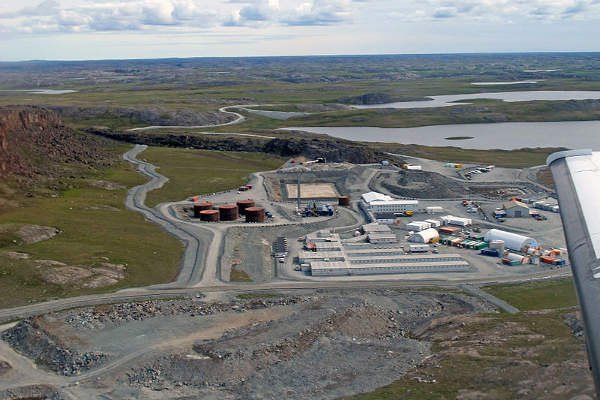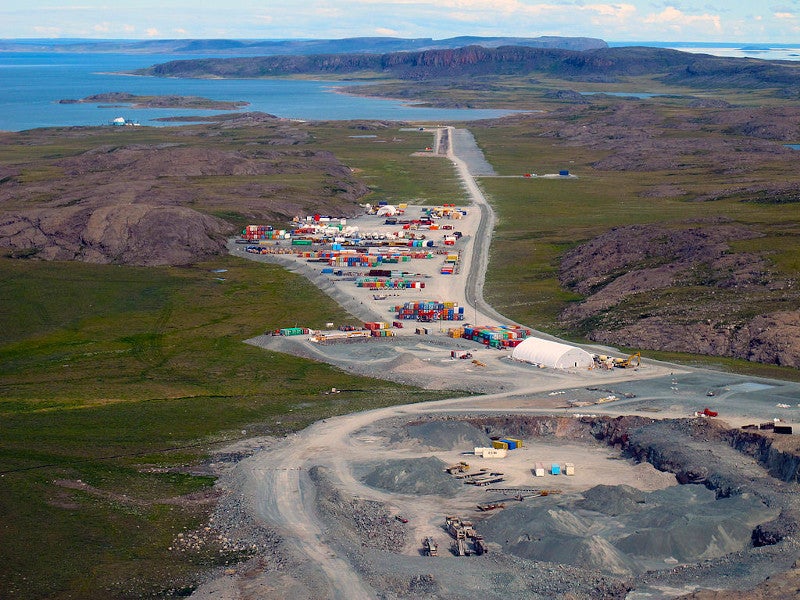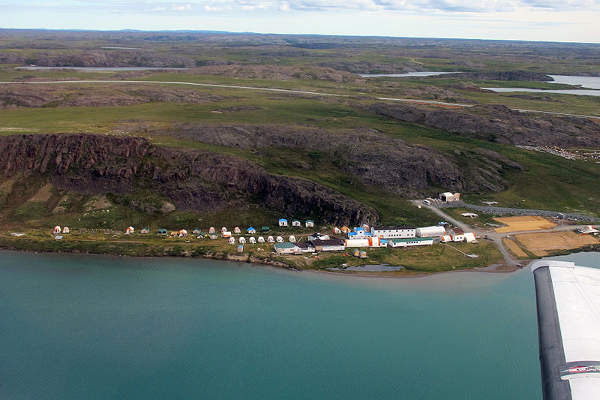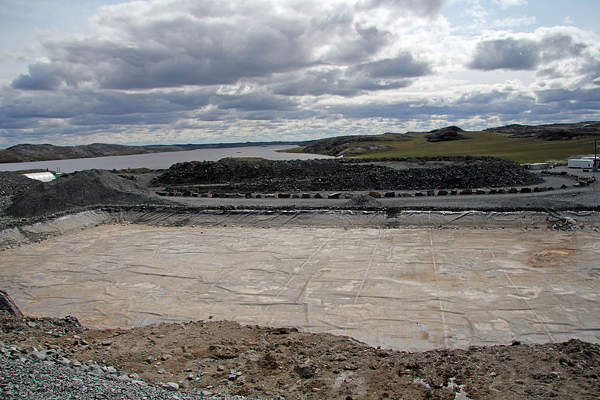The Hope Bay gold mine is located approximately 685km northeast of Yellow Knife and 125km south-west of Cambridge Bay, in the western Nunavut territory of Canada, one of the top ten gold producing countries. The project site covers a 1,101km² area and lies approximately 160km north of the Arctic Circle.
The mine is fully owned by TMAC Resources, who acquired the project from Hope Bay Mining (HBML), a wholly owned subsidiary of Newmont Mining Corporation, in March 2013. HBML had acquired the project from Miramar Mining in 2007.
The project primarily involves the construction of the processing plant and the use of existing infrastructure with some upgrades. The project’s pre-feasibility study (PFS) was completed in April 2015 and first gold pour was 9 February 2017. The mine began its commercial production in May 2017.
In March 2020, TMAC released an updated pre-feasibility report for the Hope Bay project. The report was prepared to evaluate the economics of increasing the existing capacity of the mining and processing activities at the mine by constructing a new processing facility to replace the Doris processing facility which is currently in operation.
Hope Bay is projected to produce more than 3.1 million ounces of gold in the form of dore over the existing 15-year mine life. The average production for the first four years before the proposed additional processing facility becomes operational is anticipated to be 135,800oz of gold a year, followed by 253,000oz of gold per annum over the next ten years.
The total operating expenses over the life of mine are projected at about C$3.3bn ($2.35bn), while the overall capital expenditure is estimated to be C$1.3bn ($928.52m).
Hope Bay Gold Mine geology and reserves
The deposits at the Hope Bay Project are hosted within an 85km-long, Archean-aged (2.7bn years-old) greenstone belt, which is bisected by the roughly north-south-oriented Hope Bay Deformation Zone (HBDZ) down its axis, stretching over a length of approximately 80km.
Known gold mineralization is hosted in trends along the outer and lower order structures both on the east and west sides of the HBDZ. The project consists of three underground mine environments namely Doris, Madrid and Boston.
The mine is expected to hold proven and probable mineral reserves of 16.9Mt, including more than 3.5Moz of gold at an average grade of 6.5g/t, as of January 2020.
The total measured and indicated resources are estimated to contain 5,173,000oz of gold. The mineral reserves will last until 2034.
Mining and processing at the Nunavut gold mine
The mining methods envisaged for the project include retreat long-hole stoping and overhand cut-and-fill. The latter will be employed to mine the thicker zones and in certain narrow vein environments.
The project initially involved mining at Doris North, followed by the Doris Central and Connector. Development at Madrid South and Naartok (Madrid North) will be initiated in 2019 and 2020 respectively, while production from Boston is expected in 2022.
The design, manufacture, construction and commissioning contractor for the project’s gold processing plant is Gekko Systems. The processing plant is equipped with two 1,000t/d python lines (pre-concentrator lines) containing secondary crushing, grinding, floatation and gravity gold recovery equipment. The pythons are fed by a primary jaw crusher. A concentrate treatment plant (CTP) processes the gravity and floatation products.
The CTP features regrind, cyanidation (SO2 / Air Process), resin gold recovery facilities employing Gekko’s proprietary AuRix resin and G-REX columns, doré gold bar production, and tailings treatment equipment.
Infrastructure at Hope Bay mine
The main existing infrastructure at the Nunavut gold mine project site includes gravel airstrips at Doris and Boston, power plants, camp facilities at both Doris and Boston, administration, maintenance, warehouse and mine-dry buildings, a haul road from the neighbouring Roberts Bay port to Doris and Madrid, and a tailings facility.
Major construction activities at the site in 2015 included the expansion of the existing primary powerhouse to 11.6MW (5.8MW existing capacity), widening of the airstrip, and construction of the road to the south end of the tailings impoundment facility.
The planned upgrades to the project infrastructure include a new Madrid processing facility with a capacity of 4,000t/d. New roads will be built between Madrid North and Madrid South, and between Madrid North and Boston. A service road will also be constructed from Madrid North to the tailing impoundment area (TIA).
TIA modifications will include increasing the height of the existing South Dam and building a new West Dam wall to enable the expansion of storage capacity to 18Mt.
The company intends to establish a new power generation plant at Madrid North with four 7MW generators and install a new power plant at the Boston mine site.
It also plans to construct a new accommodation camp at the Madrid North site with 400 bedrooms, a kitchen and dining area, and a recreation facility. Additional plans include a new water treatment plant at Doris.
Financing for the Canadian mining project
The project is being funded through debt and equity.
A $120m debt facility was provided by Sprott Resource Lending Partnership and Morgan Stanley Capital Group, along with underwriters led by BMO Capital Markets and CIBC World Markets, and includes Dundee Securities, GMP Securities, National Bank Financial, Scotia Capital and TD Securities.
Contractors involved with TMAC Resources’ gold mine
The drilling contractor for the project is Geotech, who has been involved with the project since 2008.
The project’s PFS was performed by Roscoe Postle Associates (RPA) in collaboration with ERM Canada Consultants (ERM), SRK and Gekko Systems.
Design and fabrication works for the processing building were subcontracted to Innovative Steel, a company based in Vancouver.










